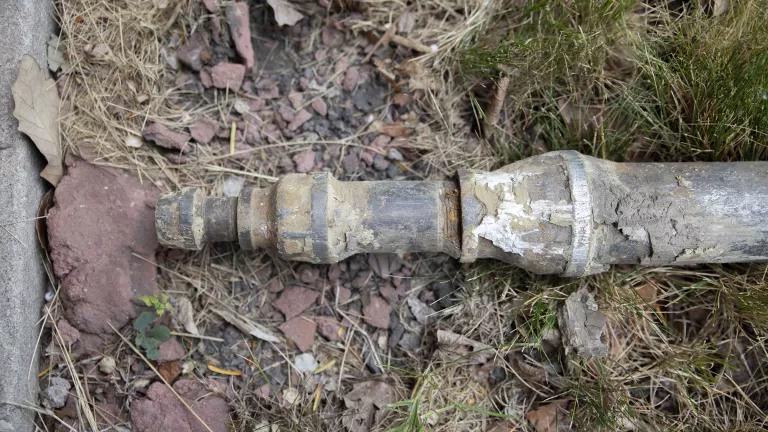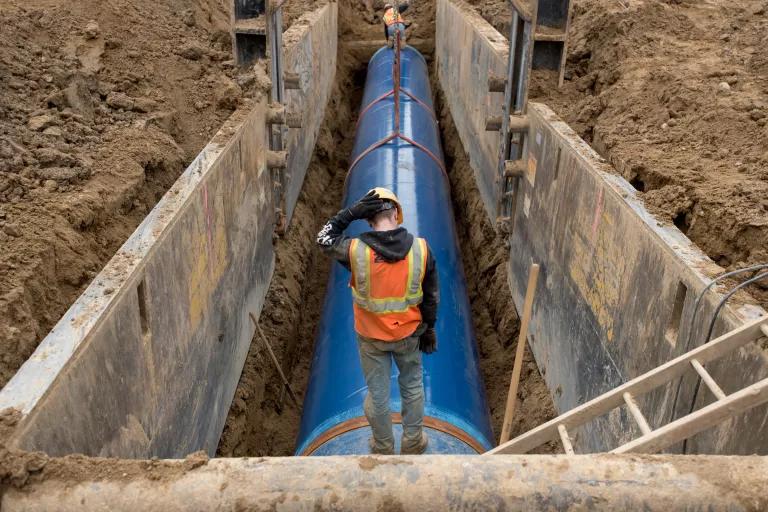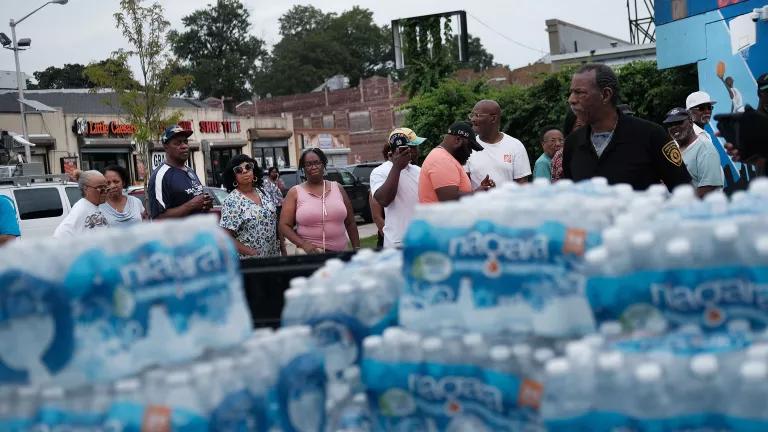Our Drinking-Water Crisis Goes Far Beyond Flint
Millions of Americans could be drinking contaminated water — and not even know it.

Part of a lead service line removed from outside the home in Chicago
Vanessa Bly Photography
At least 18 million Americans are drinking tap water from water systems that have violated federal rules for lead safety, government figures show, due to widespread failures in the testing, monitoring, and enforcement of federal drinking water standards. For many other people, the system isn’t working well enough for us to do much more than guess whether their water is safe to drink, an NRDC analysis of U.S. Environmental Protection Agency records has found.
We must fix this — and we can.
That means replacing aging water system pipes made of lead, strengthening protections for safe drinking water, and giving the people we count on to enforce those standards the tools they need to do their job.
It starts with each of us standing up to hold our elected officials to account for this stunning breach of the public trust and then speaking out to demand better for ourselves and all Americans.
We found out how much this matters earlier this year, when we learned that thousands of children in the city of Flint, Michigan, had been exposed to dangerous levels of lead in their drinking water due to slipshod monitoring and lax enforcement of safe water standards. Those problems were aggravated by the callous disregard some state and local officials showed for the complaints of the largely African American and low-income residents there.
Flint, it turns out, is just the tip of the spigot. Last year, spread across the nation, there were more than 8,000 instances in which 5,363 tap water supplies weren’t properly monitored, tested, or treated for lead as required by federal law. Violations in recent years have occurred in places ranging from Texas and South Carolina to Connecticut and Wisconsin, plaguing thousands of systems that serve millions of people.
Separately, in 1,110 communities serving 3.9 million people from Portland, Oregon, to Passaic, New Jersey, elevated lead levels were found in the water of more than 10 percent of the houses tested.
Some overlap in the numbers is possible, due to the way the data were collected. And, astonishingly, these figures don’t include Flint, because the violations there have yet to be reported in the national database that tracks such violations. We don’t know how many other communities have experienced similar failings that weren’t detected or reported.
It’s not certain whether all of these people were exposed to lead in their drinking water. That’s not how sampling works. The problem is, we don’t know for sure they weren’t.

Laborers insert a section of the Karegnondi Water Authority pipeline near Oregon Township, Michigan, on March 17, 2016. The system will link Flint and Genesee County with Lake Huron water.
David Guralnick/Detroit News via Associated Press
That’s why we put safeguards in place to ensure that everyone is protected against lead. In too many locations, the system isn’t working. We know that between 15 million and 22 million Americans drink water that comes into their homes through a lead pipe that connects their residence to the water main in the street — and those lead pipes can be a significant source of lead in tap water.
The bottom line: Untold millions of Americans across the country could have lead in their drinking water and not even know it. How is that even possible?
It’s not as if we’re just now figuring out the dangers of exposure to lead. Ancient Romans knew lead caused madness and even death. It was so widely used as a poison that medieval French monarchs darkly referred to it as poudre de la succession — succession powder. And we know from modern medicine and science that lead is a powerful toxin that, even at low levels, can impair brain development in babies, infants, and young children. It can reduce intelligence, limit learning ability, and contribute to hearing problems, anemia, hyperactivity, and difficulty in controlling impulses.
This kind of damage can set someone back for life. That’s why Congress generally banned the use of lead pipes and fittings in our water systems three decades ago. Many homes built before that, though, get their water through aging lead service lines — more than six million nationwide — that connect individual homes to a main water pipe, serving, as mentioned above, between 15 million and 22 million people. Water can come through the water main clean, in other words, and pick up lead from the service line during the final feet it travels into a home.
To protect us from that hazard, in 1991 the EPA added the Lead and Copper Rule to help implement the Safe Drinking Water Act. The rule is meant to ensure the safety of water that some 150,000 public water systems provide to more than 300 million Americans. The Lead and Copper Rule requires these providers to conduct periodic tests for lead in household drinking water. The results must be made public. And if lead is detected in water at levels above 15 parts per billion in 10 percent or more of the samples, specific action is required by law. Water providers must, for example, treat water to deter or prevent the leaching of lead from service lines, begin replacing those lines with pipes that don’t contain lead, and in some cases step up monitoring efforts.
What NRDC found, though, in its review of data maintained in the EPA’s Safe Drinking Water Information System, is that tests are often sloppy, follow-up action is inconsistent, and violators of the Lead and Copper Rule are seldom held to account.
Nearly 90 percent of last year’s violations triggered no formal enforcement action from state authorities responsible for upholding the law. Informal calls or letters were the norm, and only 3 percent of the violators faced penalties. The message: Comply if you can; otherwise you might get an e-mail.
We have to do better — and there’s a role for us all.
Let the Obama administration know it’s important for the EPA to finish its work to strengthen the Lead and Copper Rule — and demand that your state authorities enforce it. Congress needs to increase funding to better implement this rule and to help water service providers replace lead service pipes and other water infrastructure, especially in low-income areas and communities of color.
We need to ask our water authorities to step up their tap water testing, especially in schools, day care centers, and aging homes. People in older homes should contact their water providers directly, asking them to test their tap water for lead and to replace lead service lines.
No one anywhere in America should drink lead when he or she wants a drink of water. We know how to fix this. Let’s get it done.



